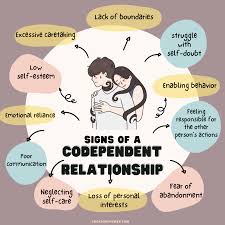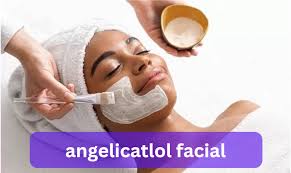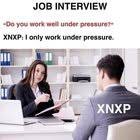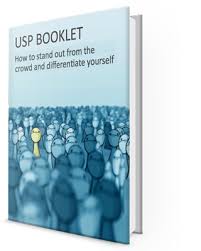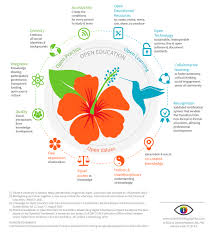.A strong USP emphasizes the benefits and advantages for the client, attracts the audience and increases conversion. We tell you what the pros and cons of a USP are and how to create one.
What is USP
Why create a USP and who needs it
Types of Unique Selling Propositions
Pros and cons of USP
How to Create a Unique Selling Proposition
Examples of USP
Expert advice
Read Also:Craft the Perfect Business Proposal
What is USP
Table of Contents
USP, unique selling proposition , is a marketing tool that emphasizes the uniqueness of a product or service, allows you to differentiate yourself from competitors and demonstrate the global advantages of the product.
A USP is a narrow offer for a specific segment of the target audience. Its essence is that it significantly differs from other existing offers on the market of goods and services.
For example, the company “Cozy House” is engaged in interior design. If you simply write on the website or in advertising “We do interior design at a bargain price”, this will not be a USP – the offer is not unique, there are hundreds of them on the market. To differentiate itself from competitors, the company must understand how it differs from everyone else.
If the company works for the mass market, then the USP may sound like this: “We will think through your design from the point of view of beauty and functionality within the agreed budget and provide three layout options in two days.” Such a USP will attract exactly the target audience that the company needs.
In Russia, an offer and a USP are often confused, but these are two different concepts. An offer is a specific proposal, for example, a discount promotion on a product, some individual offer, etc. An offer is limited in time, it works here and now and is often supplemented by triggers.
Also, USP should be distinguished from a slogan. A slogan is a tool for positioning a brand or product.
The scope of the USP is broader than the offer, it relates to the product as a whole. The USP is a more permanent tool, it does not change every Sunday, like a promotion or discount. The USP highlights the long-term value of the product or service for the consumer.
For example, the fitness center “Academy of Health” uses the slogan “Only forward”. It is not unique, but it suits a wide audience and corresponds to the company’s mission – to move the masses forward, to a healthy body and a sporty spirit. If a user comes on a tour to the fitness club, after the tour he will be offered to buy a card for six months and will be given two months of freezing and a free lesson with a trainer – this is an offer supplemented by a benefit trigger. And “Yoga with puppies on Sundays with a 30% discount” is a unique selling proposition designed for a specific target audience.
Main characteristics of the USP:
● Uniqueness
the USP should not copy the competitors’ offers, otherwise it will not work.
● Specifics
the offer should be clearly formulated, not vague. A strong USP accurately reflects the uniqueness and benefit that a person will receive from a product or service. Precise numbers work well: we do it not just quickly, but in 7 days, not cheaper than the market, but 15% cheaper.
● Brevity
of the USP is a concentrated essence, an extract of the main thing. It should be short and polished, like a spear, and kill the target audience.
● Simplicity
there is no need to come up with something abstruse or too complicated, the USP should be easy for the buyer to perceive. Figuratively speaking, a five-year-old child or your grandmother should understand the USP.
● Magnetism
the USP should be catchy, respond to the needs and pains of the target audience , this is exactly what they need.
USP is an important, but not the only tool for attracting attention to a brand and increasing sales. The course “Internet Marketer” will help you learn how to develop a comprehensive promotion strategy and build business processes.
Why create a USP and who needs it
The main goal of using a USP is to increase conversion , the main criterion of effectiveness is the number of conversions. A well-written USP increases the conversion of a website by 2-4 times. Using a USP in advertising works similarly: it magnetizes the desired audience, reducing the cost of a click and conversion. If a person has responded to a USP, he already wants to buy, because the company has met his needs, and it takes less time to remove objections and process the order.
For example, a company sells bed linen. If you simply write “We sell bed linen, click” in a banner ad, the company will receive a lot of non-targeted traffic and few sales. If the brand offers exclusive sets with designer designs costing from 20,000 ₽ and specifies this in the USP, it will interest the target audience for which the offer is designed. Accordingly, the number of sales will increase, because most of the users who click on the ad are already ready to buy, this is their budget and their need.
Every company that deals with sales should have a USP. It is possible to work without a USP, but it is important to understand the negative consequences of such a business decision. Without a USP, the company’s efficiency and profit growth will be much lower. To check the effectiveness of a USP, it is enough to launch two landing pages: one with a USP, the other without, and compare the resulting metrics.
For example, hundreds of companies offer services to prepare for the Unified State Exam, while only a few offer “Preparation for the Unified State Exam for guaranteed admission to a technical university with a probability of 98%.” Such a USP allows you to differentiate yourself from competitors, cut off unnecessary information, and hook the right audience. Those who are preparing for the Unified State Exam in Russian will skim the offer, unlike those who are looking for strong tutors in physics and mathematics or want to get into a certain educational institution.
USPs are formulated separately for different segments of the company’s target audience. Large companies with a wide range of products or services use several USPs for different segments of the target audience. Small companies with a small turnover and a narrow audience, as a rule, use one USP.
Types of Unique Selling Propositions
USPs can be divided according to the formulas for their construction – Product Plus :
● Benefit
This is the most effective formula — you need to show the user what benefit he will receive by purchasing a product or service from a specific company.
● Benefit plus benefit
An enhanced version of the first model, we offer a double benefit that covers the client’s needs. For example, we will prepare for the Unified State Exam online (one time) with a 92% probability of admission to the chosen university (two times).
● Solving the client’s problem or absence of difficulties
We close the fears and solve the difficulties of the target audience. A formula using the preposition “without”: we give a benefit and indicate what it will be without. For example, “We will make a design project for an apartment and implement it without your participation.” Or “We will renovate an apartment in one month without increasing the estimate.”
● Limitation
works well in intimate areas where there is personal communication with the client and the initially high cost of error: medicine, finance, lawyers. “Sign up for an introduction and consultation with a specialist in risk-free apartment sales, there are three consultations this week.” This formula is suitable for areas where the sales model is based on personal consultations.
● Expertise
we emphasize professionalism and experience. “Consultation with a pediatric neurologist, Doctor of Medical Sciences with 10 years of experience.” Expertise works well in conjunction with a limitation.
● Cost reduction or obvious benefit
we offer a program or service that will reduce the client’s costs. Often, USPs cannot provide a strong benefit; everyone on the market has more or less the same price tag. In this situation, you can emphasize how the company reduces the client’s costs. For example, a cleaning offer might sound like this: “Office cleaning,” or “We service offices up to 100 sq. m and reduce your team’s costs by 20%.”
● Guarantee
The company is so confident in its product that it is ready to return your money if something goes wrong. For example, with preparation for the Unified State Exam, the USP would be: “If you don’t get in, we’ll return your money.”
Read Also:Comcast Business Solutions for Your Company
Pros and cons of USP
Let’s consider the positive and negative aspects of using USP.
Pros
1.✅ Reduces advertising costs and Customer Acquisition Cost (CAC), i.e. the cost of attracting a customer.
.✅ Increases ROMI (Return on Marketing Investment), i.e. the efficiency of the company’s marketing budget.
3.✅ Simplifies the sales process, saves the working time of managers who process applications and answer questions.
4.✅ Supports the buyer at each stage of the sales funnel, works to increase brand awareness.
5.✅ Helps to differentiate from competitors
and stand out in the market.
Cons
❌If a company is no different from its competitors, it is difficult to create a USP.
❌An incorrectly formulated USP will convert poorly – for example, if you make a mistake with the needs of the target audience.
❌There is a high risk of competitors copying the USP.
❌A USP that is too narrow or too aggressive may alienate the audience.
How to Create a Unique Selling Proposition
To create an effective USP, a company needs to:
Step 1. Study your product
Highlight its strengths and unique advantages, formulate differences from competitors and reasons why the product is interesting to buyers.
Step 2. Study and segment the target audience
Understand who will be interested in the offer, what needs and pain points it addresses and which segment of the target audience is most likely to be interested. Surveys and analysis of statistics, including sales from competitors, will help.
Step 3. Combine the advantages of the product and the needs of users
We decide on the formula to combine the product and the buyer in order to cover their needs as fully as possible. At this stage, we create several draft versions of the USP.
Step 4. Test the USP
We conduct A/B tests, measure metrics and choose the most converting option.
Step 5. Launch the finished USP
If necessary, we adjust the offer and enter the wider market.


